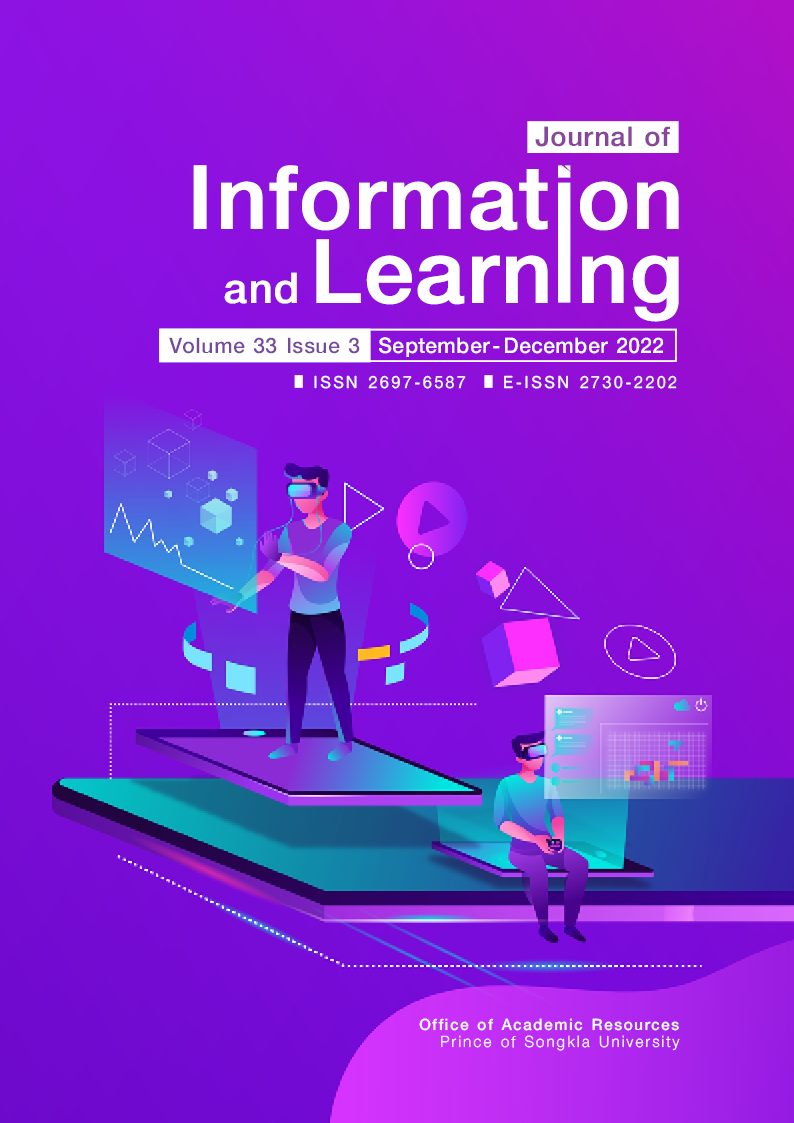The Development of a Blended Instructional Model Using Augmented Reality and Innovative Design Based Learning to Enhance Undergraduate Students' Ability in Creative Jewelry Design
Main Article Content
Abstract
The study aimed 1) to study current conditions and needs of blended instructional model, 2) to create a blended instructional model using augmented reality and innovative design based learning, 3) to conduct an experiment to study the effect of blended instructional model, and 4) to certify a blended instructional model. The sample group was 16 undergraduate students of Jewelry and Metalwork at Rajamangala University of Technology Rattanakosin. The research instruments comprised the questionnaire of current conditions and needs, instructional model, augmented reality for jewelry design, jewelry design performance evaluation form and certification evaluation form. Data were analyzed by using mean, percentage and standard deviation.
The study found that 80.4% of students used Line and 77.3% of faculty staff used Line and Google Docs. The demand for teaching management focused on the development of media that could be used both onsite and online. It is also found that the created instructional model consisted of three steps. The first step was an introduction to learning; the second one was creative jewelry design learning consisting of jewelry design, idea sketch of Jewelry design, development of jewelry design, presentation, jewelry model, and jewelry quality inspection; the final one was measurement and evaluation. The results of the model trial showed that the scores for the designing ability were of good quality. The post-test scores of students' were significantly higher than the pre-test scores at .01 level.
Article Details

This work is licensed under a Creative Commons Attribution-NonCommercial-NoDerivatives 4.0 International License.
The Journal of Information and Learning is operated by the Office of Academic Resources, Prince of Songkla University. All articles published in the journal are protected by Thailand copyright law. This copyright covers the exclusive rights to share, reproduce and distribute the article, including in electronic forms, reprints, translations, photographic reproductions, or similar. Authors own copyrights in the works they have created as well as the Office of Academic Resources. The Journal reserves the right to edit the language of papers accepted for publication for clarity and correctness, as well as to make formal changes to ensure compliance with the journal's guidelines. All authors must take public responsibility for the content of their paper.
References
Benham, C. (2015). Augmented reality for jewelers enhances the customer experience. Inspired. https://www.theinspiredcollection.com/inspired-jewellery-news-and-media/november-2015/augmented-reality-for-jewelers-enhances-the-custom
Graham, C. R. (2006). Blended learning systems: Definition, current trends, and future directions. https://shorturl.asia/ICMqU
Jamornmarn, S. (2013). A Model of constructivist web-based learning environment managemen using inquiry learning process to enhance systems thinking for sustainable product design of undergraduate students [Unpublished doctoral thesis]. Chulalongkorn University.
Khawloueng, D., & Anukulwech, A. (2019). The development of virtual reality interactive 3D learning materials by using augmented reality (AR) technology for enhance critical thinking skill’s vocational education students with different critical thinking levels. DSpace Repository. http://dspace.lib.buu.ac.th/xmlui/handle/1234567890/3742
Khumthanhom, J. (2020). The effect of learning activities using augmented reality in the drawing style to enhance multi-view drawing abilities of mathayomsuksa 2 of sukhondheerawidh school [Unpublished master’s thesis]. Silpakorn University.
Meesuwan, W. (2013). Development of the instructional package together with augmented reality. http://nuir.lib.nu.ac.th/dspace/handle/123456789/493
National Education Act B.E. 1999. (1999). the Government Gazette. Volume 116. Section 74a. August 19. p.64, p7.
Podjanapimol, P. (2019). The study on jewelry design trends in the 21st century to create value added for raw stone by the design process. The Journal of Social Communication Innovation, 7(2), 180-193.
Raber, C. (2015). Design-based learning for the elementary school classroom. https://core.ac.uk/download/pdf/55286549.pdf
Sinthaworn, W. (2010). Development of a cooperative blended learning model using resource-based learning to enhance information literacy and team learning skills for rajabhat university preservice teachers [Doctor’s thesis]. Chulalongkorn University.
Staker, H. (2011) The rise of K-12 blended learning: Profiles of emerging models. https://www.christenseninstitute.org/wp-content/uploads/2013/04/The-rise-of-K-12-blended-learning.emerging-models.pdf
Wisetsat, C. (2019). The development of teaching model to promote innovative teaching skills for pre-service teachers. Humanities and Social Sciences Journal, Ubon Ratchathani Rajabhat University, 10(2), 305-320. https://so01.tci-thaijo.org/index.php/humanjubru/article/view/179909/157113


